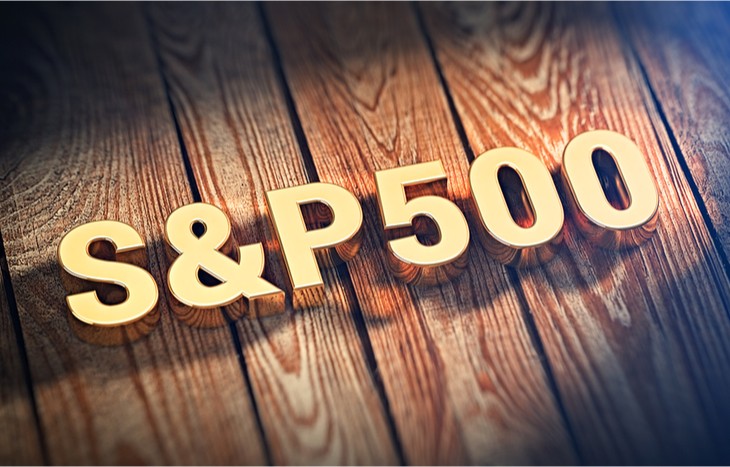As an investor, it’s important to know the average return of the stock market, to understand how you might position your portfolio for the long term. The average return of stock market (S&P 500 Index) is around 10.5% since inception. The S&P 500 Index has slumped more than 12% year to date from its peak of 4,800 to 4,200. The decline began as the U.S. Fed hinted at aggressive interest rate hikes throughout the year. It accelerated as Russia declared war on Ukraine.
These are uncertain times, and negotiation talks are not going well. Goldman Sachs lowered its estimate for the S&P 500 index for the second time in a month. This uncertainty makes you skeptical about whether or not to invest in the stock market. But Warren Buffett says never bet against America. The stock market has sustained World War II, 9/11, the 2009 financial crisis, and the 2020 global pandemic.
S&P 500 Average Annual Returns (2000 – 2022)
Updated as of 3/14/2022
Average Return of Stock Market
The S&P 500 Index delivered an average annual return of around 10.5% from its inception in 1957 through 2021. The S&P 500 dates back to the 1920s when it started tracking 90 stocks in 1926. It gradually expanded to 500 stocks in 1957.
If you look back from 1928 onwards, the average annual return is 3.06%. This huge dip in average return is due to the number of stocks and major events. Between 1928 and 1957, the American economy witnessed the Great Depression and World War II, when the index crashed 82% and 48%, respectively.
The next time the S&P 500 index saw a dip of more than 45% was in the 1973-74 recession, the 2020 dot.com bubble, and the 2007 Financial crisis.
S&P 500 Annual Returns (Bigger Picture)
Although the S&P 500’s 64-year average annual return is around 10.5%, rarely has the index maintained that return in a given year. This is because the stock market is volatile and has undergone bull and bear phases, corrections and downturns.
Historical data shows that the S&P 500 fell between 10% and 20% once a year before World War II. But the market gradually stabilized, and the frequency reduced to 13 corrections in 41 years. In these 13 corrections, the average dip was 14.8%, and the average length of the dip was 92 days. These small corrections usually recover in four months.
But bigger declines of 20-40% take an average of 15 months to recover. The S&P 500 has dipped more than 20% in five instances in the last 41 years. But there are also instances of a market crash when the index falls more than 40%. At such times, it takes an average of about 58 months to recover. An event as big as the market crash happened twice between 2000 and 2010. But it was followed by an equally long bull market.
On average, bull markets have lasted for about 4.5 years each. But the 2010-2020 bull market was the longest in American history. This jump came after the 2007 recession followed record-low interest rates and record-high business profits, especially from the tech industry. A handful of tech giants ‑ Apple, Amazon, Google, Microsoft – reached a $1 trillion market cap during this bull-run.
Average Return of Stock Market (Accounting for Inflation)
The S&P 500 Index balances this volatility by updating the list every quarter based on market capitalization, liquidity, and industry. It removes the stocks that fail to withstand the crisis and adds those that rise to new heights.
This dynamic index mitigates the volatility shocks and gives an average return of 10.5% before factoring in inflation. The inflation-adjusted average return is around 7%. Some analysts doubt the accuracy of this figure as the Consumer Price Index (CPI) vastly understates the true inflation rate.
The right way to look at any average return is to look at the real return that factors in inflation. After all, investing is sacrificing your current purchasing power to get a higher purchasing power in the future. If analysts feel that 7% is an inflated average real return, how to make attractive returns from the stock market?
Should You Time The Market?
This is where the famous “buy the dip, sell the rally” comes into the picture. As I stated before, the market corrects periodically. A 10%-20% correction is common. But there are times when the bear market wipes away 20% – 40% of the value. There are also instances of a crash of more than 40%. That is where big money lies.
Warren Buffett is an advocate of index funds as there you don’t have to choose the right stocks. You just have to invest in the American economy.
If you look at the S&P 500 Index structure, every stock achieves its weightage based on its market cap. These 500 stocks represent around 80% of the overall stock market. This index delivered an average return of 14.4% in the longest U.S. stock market rally from February 2009 dip to the February 2020 peak.
Average Return of Stock Market Takeaway
The S&P 500 index is now down 12.5% YTD, and is likely to fall further as the Fed hikes interest rates and the Russia-Ukraine war fuels inflation by increasing commodity prices.
This is a good time to enter the market with the SPDR S&P 500 ETF Trust that tracks the S&P 500 Index. The index could fall further if the war escalates. A dip of 20% could be the second entry point to buy the dip. The market could take over three years to rebound once it bottoms out. So stay invested for at least eight years to beat the average of 10.5%.
Disclaimer: Value in data may vary. We strong advise you to do your own calculations and come to your own conclusions.










